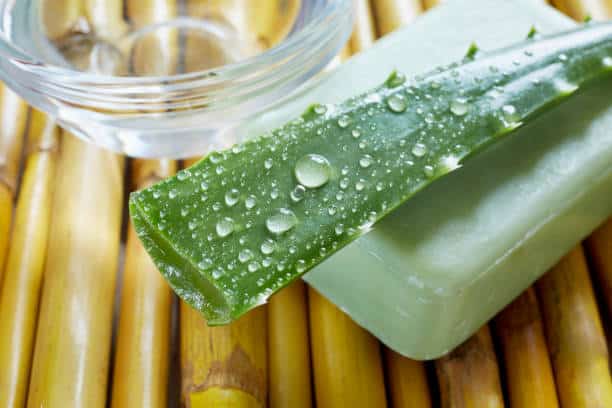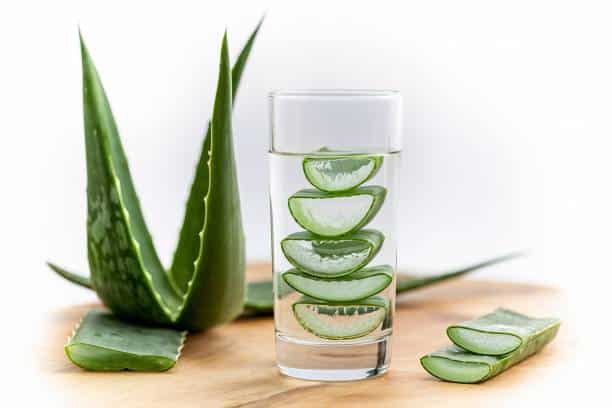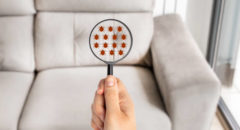
Aloe vera is well known for its medicinal properties, and as more research is conducted, the list of health benefits is likely to grow even longer. While it’s possible to get aloe vera leaves, gel, or juice in some specialty supermarkets, it pays to have your own plants. Here’s what you need to know about growing aloe vera where you are so that you can have it at your fingertips all the time.
RELATED: 6 Reasons Why You Should Be Drinking Aloe Vera Juice
10 Reasons to Have Aloe Vera
1. It’s Great For Small Wounds
Aloe vera has proven antibacterial, antiviral, and antiseptic properties. When the gel is applied to small scratches and cuts, it can prevent infection while encouraging these wounds to heal.
2. It Can Treat Burns
If you get a mild burn, applying aloe vera gel to the cooled area can help the skin heal more quickly. While mild burns can sometimes cause the skin to bubble and eventually peel, some people who use aloe vera gel on the affected area immediately after cooling it don’t experience this. It may also reduce the likelihood of permanent scarring.
3. It Can Soothe Your Digestive System
In this case, the barbaloin that’s found in the yellow liquid right below the leaf’s surface can help with constipation. It has been shown that the compound has laxative properties that can loosen things up for you. However, it’s not advisable to use it consistently as it hasn’t been thoroughly studied.
4. It Can Help With Canker Sores
In keeping with the plant’s antimicrobial properties, swishing the gel around the mouth can help to heal any canker sores. According to a recent study, using aloe vera gel can reduce the healing time of canker sores.

5. It Can Remove Dental Plaque
While it won’t replace scheduled dental visits, using aloe vera gel in your mouth can prevent tooth decay by removing dental plaque. In a 2020 study, using aloe vera gel was found to be as effective as using over-the-counter mouthwash.
6. It Can Moisturize Your Skin
Aloe vera has some impressive moisturization properties, which can be beneficial for those with dry skin. If you have skin conditions like eczema or psoriasis that flare up when your skin is dry, using aloe vera gel can help prevent that from happening.
7. It Can Help With Blood Sugar Levels
A recent review suggests that aloe vera can increase your insulin sensitivity and make it easier for you to maintain healthy blood sugar levels. While it’s not a recommended substitute for your prescribed diabetes medication, it may be beneficial to people with prediabetes and type 2 diabetes.
8. It Can Soothe Inflamed Skin
Aloe not only moisturizes the skin, but it can also promote collagen production and a healthy skin barrier. As a result, it can calm inflamed skin while encouraging healing. This can be beneficial for people who have skin conditions that often cause inflammation.
9. It Can Ease Heartburn
Though more research is needed, early studies suggest that aloe vera can be as effective at soothing the heartburn caused by gastroesophageal reflux disease (GERD) as prescribed medication. Since this isn’t finalized, though, you shouldn’t replace your medication without talking to your doctor.
10. It Can Help With Itchy Bites
As noted previously, aloe vera can soothe damaged skin. This property also helps when you have insect bites or stings. In this case, you only need to apply the gel to the affected area and leave it.

Why it’s Good to Have it Available
As you can see from the list of benefits above, some of the best uses of aloe vera come from immediate or consistent use. For example, if you have a mild burn, you’ll get the greatest benefit from using the fresh aloe vera gel immediately. The longer it takes for you to cool down and treat a mild burn, the less likely it is for your skin to escape unscathed.
When using aloe vera for other purposes, it can be easy to underestimate how much you need. This is especially likely if you’ve never done this before. Depending on how easy it was to get the first set that you bought, not having enough can disrupt your routine. It’s much easier when you have the plant on hand.
Finally, growing the plant yourself gives you control over the quality of the aloe vera you’re using. While you can’t be sure about how others have grown or treated their aloe vera, you can attest to how you’ve cared for the plants you grew.
How to Plant Aloe Vera
If you’re interested in planting aloe vera, the good news is that it’s fairly easy. The first place to start is ensuring that you get the right variety of aloe vera, as certain species don’t have the same health benefits. Aloe aristata has white teeth at the edges, while the aloe polyphylla plant has short leaves that are arranged in a spiral.
When growing aloe vera, you can start with seeds, leaf cuttings, or offsets. Any of these options will require patience, as it can be a slow process, and the last two choices aren’t always successful. If you already have a plant, you can cut a leaf that’s at least a fifth of the size of a full-grown leaf and plant it in a new pot with ample soil. Given time and a little water, it may sprout roots and grow into a new aloe vera plant.
Alternatively, you can wait for your mature plant to produce offsets or pups. These can form as your plant grows. You’ll see them as mini plants within the main aloe vera plant. It can take a little more work to prepare these for planting, but it can be successful in giving you more viable plants.
Once the offsets look like small aloe vera plants, you have to remove the entire plant from the pot. This step is important because you’ll need to carefully separate the offset and its roots from the main plant. When you’ve done that, you can place the offset in a pot with well-draining soil. You should water it and gradually introduce it to light.
Aloe vera grows well in hot climates, so as long as you live in an area that has good sunlight all year, you can keep the plant outdoors. This can be denoted as being in Zone 10 or above on the USDA Plant Hardiness Map. That’s because aloe vera loves consistent sunlight and well-draining soil. Your plant should be in a spot where it can get bright light but not direct sunlight. If you live in an area that gets months of snow, though, you need to take a different approach.
You should use a pot that’s large enough to accommodate a growing plant. It should also have drainage holes so that excess water can drain away. While aloe vera doesn’t have long roots, it’s still possible for the leaves to outgrow a confined space. By using a pot, you can keep the plant outside when it’s warm and move it indoors when it gets cold, as frozen soil will cause the plant to die.
The aloe vera plant does well if you introduce it slowly to sunlight when you have to move it, and you should water it intermittently. Experts recommend giving it a good amount of water every two weeks to keep it healthy. If the soil becomes waterlogged, the plant can die, and you’ll notice that the leaves are turning yellow. It’s also a good idea to add fertilizer during the spring.
Aloe vera offers numerous health benefits, making it particularly useful for those who wish to incorporate it into their skincare or haircare routine permanently. While you can get the plant or its gel from specialty supermarkets, it’s better to have the plants in your garden so you always have them on hand.









